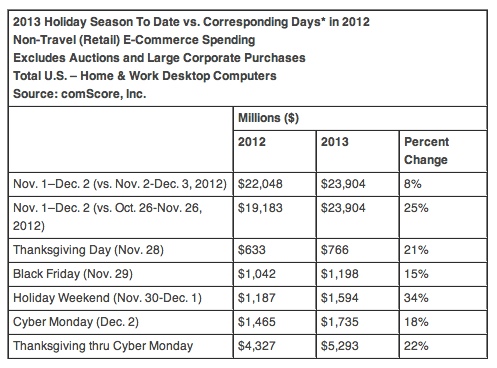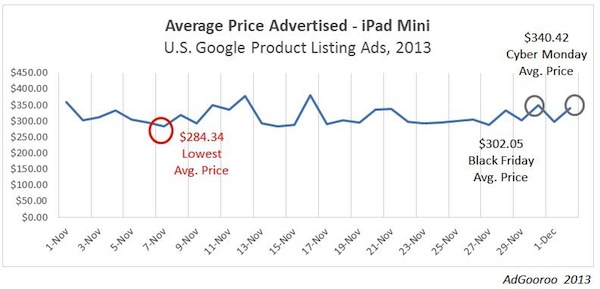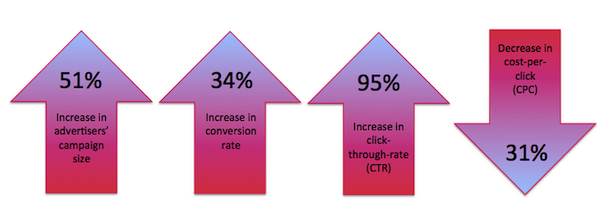Online shopping in the U.S. this holiday season was expected to be big, but many didn’t know just how substantial it would be. Data flooding in from all over shows Cyber Monday was a huge success, with comScore proclaiming it as the day with the heaviest online spend in U.S. history.
“Cyber Monday reached $1.735 billion in desktop online spending, up 18 percent versus year ago, representing the heaviest online spending day in history and the second day this season (in addition to Black Friday’s $1.198 billion) to surpass $1 billion in sales,” comScore said in a report.

“While it’s true that many retailers are bleeding their Cyber Monday promotions into the weekend before and the days afterward, Cyber Monday itself continues to be the most important day of the online holiday shopping season,” said comScore chairman Gian Fulgoni. “That said, we did also see evidence of early promotions pulling some dollars forward into the weekend, so it is possible that Cyber Monday could have even been stronger were it not for the emergence of this trend.”
The heavy promotion of Cyber Monday as a an online shopping event paired with the shopper’s drive for deals is what makes the event such a success; but it may not actually be the most practical way to shop.
Research from AdGooroo showed advertised prices on items jacked up on Cyber Monday to 18 percent higher than the first weeks in November. Take the iPad Mini, for example: AdGooroo tracked its price on Google Shopping and found a more than $50 difference on Cyber Monday.
 From AdGoroo:
From AdGoroo:
The average price advertised for an iPad Mini in the first three weeks of November was $317.11 compared to $302.05 on Black Friday and $340.42 on Cyber Monday. Although the average price on Black Friday was $15 lower than the average price from November 1 through 22, there were 13 total days in November in which the average price advertised was lower than on Black Friday. The day with the lowest average price was actually November 7 at $284.34.
Social media was a driver of those sales on Cyber Monday, too. While Pinterest’s traffic on the big day remained unchanged, revenue from the social platform was up 3.6 times the average, Piqora data showed.
“Top tags and images on Pinterest were related to people pinning and buying boots and coats,” Piqora said. “This proves that people aren’t just pinning for the sake of pinning. They are pinning to buy and they are going to Pinterest to look for products to buy.”
Facebook advertising proved to be a successful marketing channel for many retailers that day, showing Facebook retargeting click-through rate nearly doubling on Cyber Monday with a 34 percent higher conversion rate, according to Triggit.

“SEM was previously the only efficient and scalable channel to which advertisers allocated extra budget during the holidays, but the landscape has changed dramatically,” Triggit said in a report. “As our Year-Over-Year Cyber Monday data shows, Facebook retargeting has matured since last year and is the holiday gift that will keep on giving in 2014.”
For more information on how the recent holiday retail events fared, check out this report from earlier on Black Friday’s success.

 From AdGoroo:
From AdGoroo: